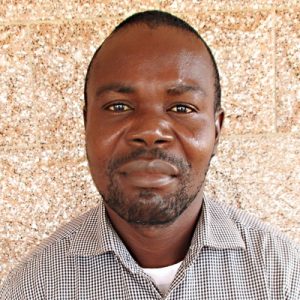The entire Lungi Government Hospital compound is fenced in. Within, there is a vast land, and at the center of it, there are buildings used for patient wards, laboratories, storage, and administrative buildings. The property's front has a large open space used as a car park and the patients' waiting area.
Simultaneously, the back of the buildings looks bushy due to the weeds that fill empty raised beds used for agricultural purposes during the rainy season. Then, the gardens are filled with vegetables and legumes. Trees within the compound produce both fruit and shade, accommodating patients waiting for treatment, especially when the day is sunny and hot.
This well is located on the grounds of the Lungi Government Hospital. The patients typically use this well, but a drop in the water table led to low water quantity. It tends to be very time- and energy-consuming to fetch water from here because so little water comes out. This prevents patients and staff from accessing water whenever they need it.
"People have to wait to fetch water sometimes, which is very problematic," said Dr. Alusine Yillah.
"Someone might come who urgently needs water but has to wait in line with the rest of the people to get it. This is very straining for our patients and us."
The borehole with the submersible pump is only useful when there is a power supply to the facility, which is not a regular occurrence. When there is a power cut, the entire facility also runs out of water because there is no storage tank to store water for later use. Patients and staff must then turn to the nearest community well. Fortunately, it is functional, but since it serves the nearby households, it is usually crowded.
"Accessing water in the hospital is not easy, especially when there is a high need for water by many people. We have to wait in line to fetch water, and sometimes when one is sick and has no one to help out, we have to wait until the pump is free and easily accessed," said Samuel, a patient we spoke to at the hospital.
What We Can Do:
Well Rehabilitation
The well marked for this overhaul is dry for a few months every year and needs major work to supply adequate, clean water to the community year-round. The pump will be removed, and a hand auger will be lowered inside and powered by a drill team. This hand auger will allow the team to drill several meters deeper to hit a sufficient water column to ensure the well supplies water throughout all seasons.
As the team drills, a casing will be installed, transforming the bottom of this hand-dug well into a borehole. PVC piping will connect this lower system directly to the pump, a construction that we know will also improve the quality of water.
Once this plan is implemented, everyone within the community will have access to safe drinking water in quality and quantity, even through the dry months.
Hygiene and Sanitation Training
There will be hygiene and sanitation training sessions offered for three days in a row.
After our visit, the hygiene and sanitation trainer decided it would be best to teach community members how to build a tippy tap (a hand-washing station built with a jerrycan, string, and sticks). They will use these tippy taps for handwashing demonstrations and will also teach about other tools like dish racks and the importance of properly penning in animals.
This training will also strengthen the water user committee that manages and maintains this well. They enforce proper behavior and report to us whenever they need our help solving a serious problem, like a pump breakdown.

 Borehole Well and Hand Pump
Borehole Well and Hand Pump
 Rehabilitation Project
Rehabilitation Project


























